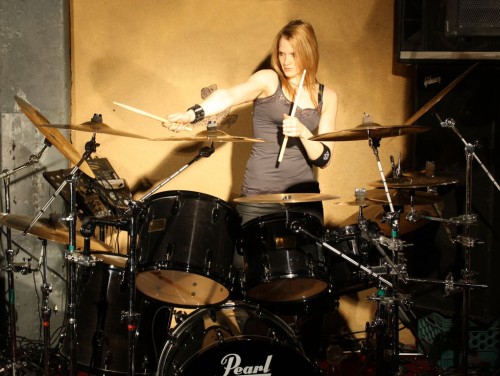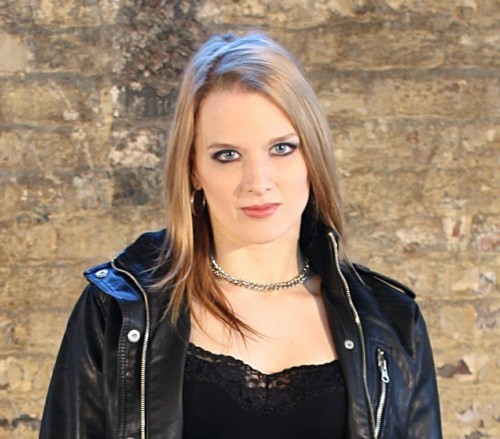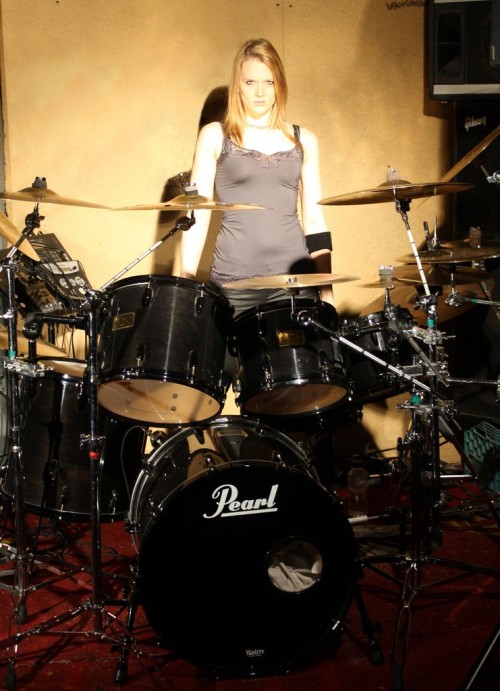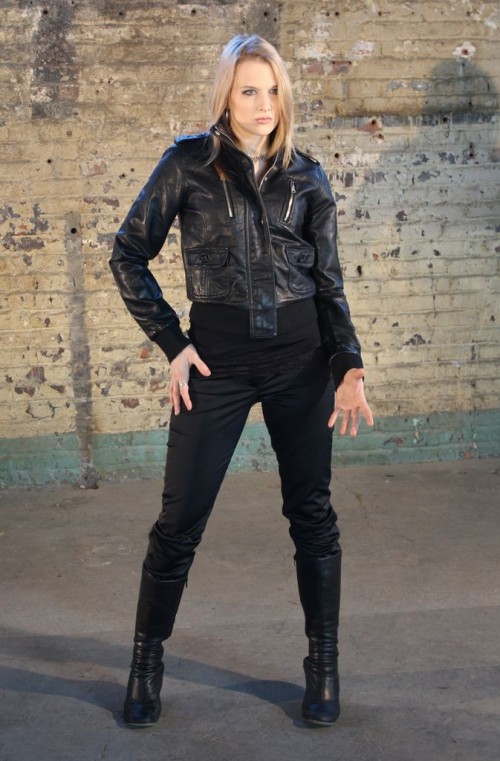 Experienced on both sides of the control room glass, drummer and sound engineer, Gabrielle Morin, possesses a parallel set of skills. With her first band, Deeply Confused , a melodic technical death/thrash metal band, she impressed and destroyed as she spun drum riffs of arresting speed and uncommon grooves. Lately, she has been studying sound design and processing to further add to her engineering qualifications. Tom Tom was able to find Gabrielle via email in Montreal and quiz her about drum sounds and other things.
Experienced on both sides of the control room glass, drummer and sound engineer, Gabrielle Morin, possesses a parallel set of skills. With her first band, Deeply Confused , a melodic technical death/thrash metal band, she impressed and destroyed as she spun drum riffs of arresting speed and uncommon grooves. Lately, she has been studying sound design and processing to further add to her engineering qualifications. Tom Tom was able to find Gabrielle via email in Montreal and quiz her about drum sounds and other things.
Full Name: Gabrielle Morin
Lives In: Montreal, QC, Canada
Current Projects: Shadows in reverse
Past Projects: Deeply Confused, session drumming in studio
Other Pursuits/Projects/Professions: I studied sound design in school and I surely want to work in the post-production industry or in studios. Right now, I’m attending university to refine my knowledge and my art in this business.
Drum Gear set up: Pearl master custom maple shell, black with black ring, 2 bass-drum: 22″, Toms 10”, 12”, 14” and 16”, Sabian cymbals, Vater sticks, D-drum and Roland triggers, Roland brain.
Favorite Food: Italian and Asian food
Tom Tom Magazine: What has your experience been like recording as an artist vs. being on the other side of the glass, at the mixing board/console?
Gabrielle Morin: It’s like two different worlds. But one experience helps to inform in a better way the other. When you’re the engineer, you have to think about almost everything in the concept. When you’re the artist, you’re mostly only focused on playing.
What is your ideal drum sound for a snare drum? Kick drum? Cymbal decay? Overall room presence?
A really tight and mid-pitch sound for the snare. Not too high for me. A tight and mid-pitched sound with a lot of big fat frequency with a mic and trigger for the kick. Ordinary cymbal resonance for a “metal” drum kit sound. Isolated dry room in all of the good ways, dimensions and materials.
Have you worked with other musicians in the studio and helped advise them in something of a producer/engineer capacity?
Yes. During my training in a studio for my school graduation. I was the assistant engineer in a death metal drum recording session. I was able to artistically manage the drummer for some parts of his playing.
What is your musical background?
I started playing drums when I was 19. I played clarinet, saxophone, trumpet, and bass in my school music classes. Plus, piano, keyboard, and a bit of electric guitar. I didn’t have lessons until I studied with Flo, the drummer from Crytopsy, who helped me work on my hand and foot technique to gain speed and endurance.
Who are your heroes (drum and otherwise)?
Neil Peart (Rush) for his consistency and Angela Gossow of Arch Enemy for having the guts to perform and to be respected in a man’s world.
How/When do you practice? Do you have any recommendations for a routine?
I practice 3 or 4 times a week depending on my job schedule, in the afternoon or in the evening. I suggest a hand (finger and wrist 5 minutes per arm with patterns) and foot (ankle 5 minutes each with patterns) every two days on a pad. On the kit drum, hand and foot endurance at different tempos and patterns of 8th or 16th notes. Of course, playing different times signatures and beats. Also, I train two or three times a week in a gym to improve endurance and strength for my arms and my legs.
How did you work on your speed? (How fast can you blast?)
You have to be constant in your routine each week. This is the key to improving yourself in general, and of course to be faster. You have to think fast and always be sure that you’re able to have really good control on each tempo you wish to reach. I think practicing endurance for your arms and feet is the key to improving your speed. Never give up! Right now, I can blast at 240 bpm on sixteenth notes with my hands and feet.
You mentioned drum triggers in your set-up. Could you please describe, and how do you use them?
A drum trigger is an electronic device that can be attached to various parts of a drum set (bass drum, tom-toms or snare, for example). Many of today’s metal drummers use triggers to accentuate the sound definition of their fast kick drum pattern, toms fills, snare strokes… even cymbals! When the drum with the electronic device is hit, it produces a sound or noise that is pre-programmed through a sound module. After programming the sound module with a lot of different parameters, the trigger can reproduce almost any sound. I work with Roland bass-drum and snare trigger. D-drum trigger for my toms.
What might your current playlist look like?
Depending on my mood, technical death metal and thrash death metal for training at the gym or simply for pleasure while at home; some dark doom metal for ambiance; black metal to be in a really dark and mysterious mind frame.
Do you have a favorite time signature/drum pattern/go-to fill?
I really like odd time signature like 5/8, 7/8, etc. It’s like a challenge for me to put this kind of patterns in my beat composition these days. Blast beat in 3/4 or 6/8. Toms fill in sixteenth notes, with triplets, single or double strokes. Snare double or single strokes.
Lastly, do you have any advice for a female drummer playing or learning to play death metal?
Focus on your endurance and speed for your wrists, fingers, arms and ankles. You have to think loud and fast to improve yourself in that kind of music. Take time to be really comfortable with each tempo and pattern you want to play before upgrading it to be faster. Listen a lot of death metal bands to be always connected with this kind of music. Of course, different kinds of metal music also help, so that you’re not focusing on only one type of drumming. Make a good training routine at the gym or else to stay in shape and improve your endurance and strength.
By Caryn Havlik for Tom Tom Magazine
Photo by Yanick Cyr




